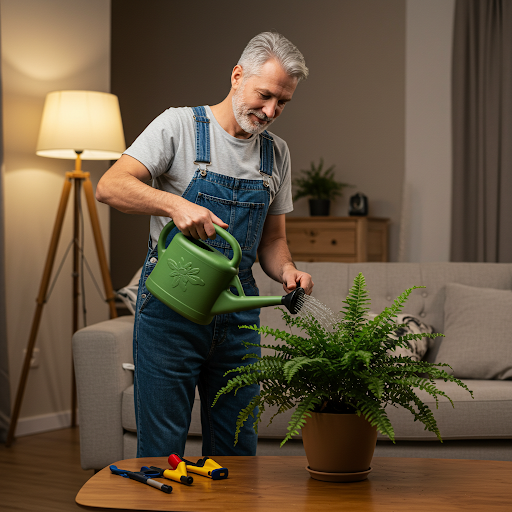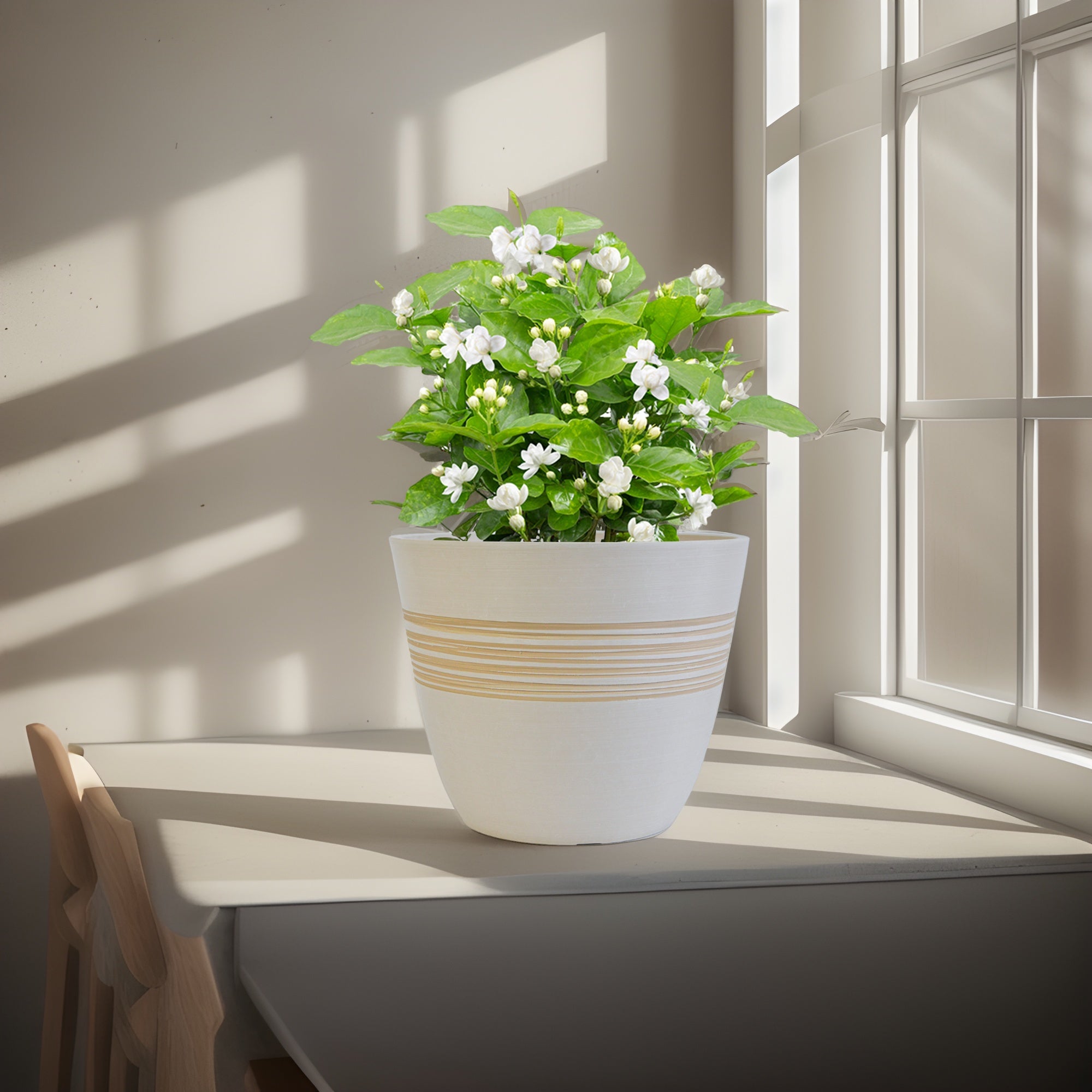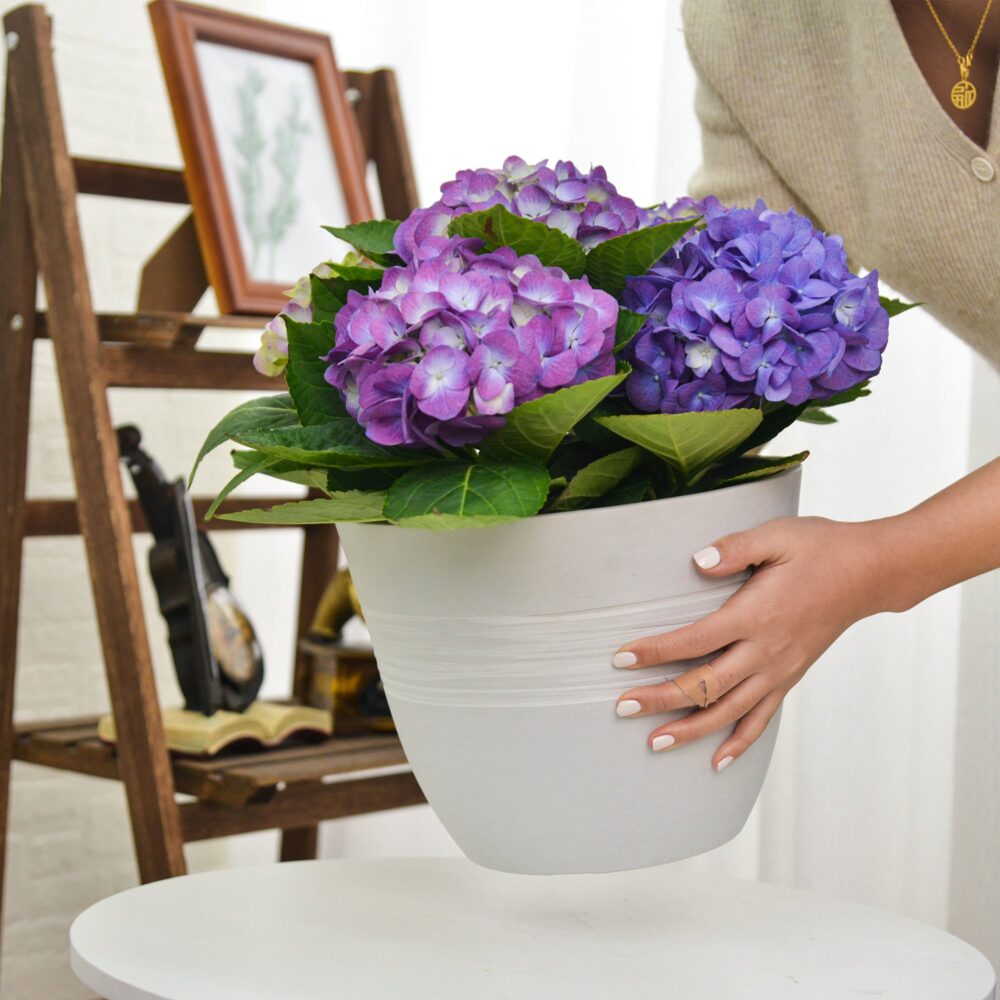Just 1 Teaspoon Per Liter – Watch Your Plants Instantly Thrive and Bloom! (Use with Extreme Caution!)
As spring arrives, the urge to help our indoor plants and garden flowers regain their strength, stimulate growth, and prepare for a season of lush blooms is strong. Over time, plants deplete the nutrients in their soil, especially if they haven’t been repotted recently. A lack of essential nutrients can lead to sluggish growth, weak stems, and pale leaves. One method suggested for revitalizing flowers is to provide them with a nitrogen-rich fertilizer. The Spanish article you provided highlights using ammonia as a simple and affordable source of nitrogen.

Why Plants Need Nitrogen
Nitrogen is one of the most crucial macronutrients for plant growth. It plays a vital role in the formation of chlorophyll, which is essential for photosynthesis. Without sufficient nitrogen, plants struggle to produce energy, resulting in stunted growth and weakened foliage. Nitrogen deficiency can manifest in several ways:
- Yellowing of leaves (chlorosis)
- Stunted growth
- Weak, spindly stems
- Reduced flowering
- Increased susceptibility to diseases
By replenishing nitrogen levels, you can potentially restore your plants’ health, improve their ability to absorb other nutrients, and enhance their resistance to environmental stresses.
The Potential Benefits of Using Ammonia as Fertilizer (According to the Article)
The Spanish article suggests that a simple and effective way to provide nitrogen to flowers is by using ammonia (also known as ammonium hydroxide), a common pharmacy product in some regions. Ammonia is rapidly absorbed by plant roots, making it a potentially fast-acting fertilizer. Some key benefits mentioned include:
- Rapid Plant Growth: Encourages the production of new leaves and stems.
- Improved Leaf Color: Helps restore a deep green color to foliage.
- Increased Blooming Potential: Provides the energy needed for lush and abundant flowering.
- Enhanced Plant Immunity: Strengthens resistance to pests and diseases.
- Soil Enrichment: Supports beneficial microbial activity in the soil.
How to Prepare and Use Ammonia Fertilizer (Use Extreme Caution!)
The Spanish article describes using ammonia as a nitrogen fertilizer as simple and cost-effective. However, it is crucial to understand the risks associated with using ammonia and to proceed with extreme caution.Ammonia is caustic and can damage plant roots and foliage if used incorrectly. It can also be harmful to humans and pets.
Proceed with the following instructions ONLY if you fully understand the risks and are willing to take extreme precautions. Consider safer alternatives like commercially available nitrogen fertilizers or organic options first.
Ingredients (Use Precise Measurements!):
- 1 liter of water (at room temperature)
- 1 teaspoon of clear household ammonia (available at some pharmacies or hardware stores – ensure it is plain ammonia without any added detergents, fragrances, or other chemicals). Do NOT use cleaning ammonia that contains other additives.
Instructions (Follow Carefully!):
- Pour 1 liter of water into a container or watering can.
- Carefully add 1 teaspoon of clear household ammonia to the water.
- Stir the mixture gently to ensure even distribution.
- Use the solution immediately after mixing to prevent nitrogen loss.
- Water your plants at the base (on pre-watered soil) allowing the roots to absorb the nutrients effectively. Avoid getting the ammonia solution on the leaves and stems of the plant.
Application Frequency (Use Sparingly!):
- For Decorative Leafy Plants: The article suggests once every two weeks. However, monitor your plants closely for any signs of stress or damage.
- For Flowering Plants: The article recommends once a month to support blooming while avoiding excessive foliage growth. Again, observe your plants carefully.
- For Weak Plants: If plants show severe signs of nitrogen deficiency (yellowing leaves, weak stems), the article suggests more frequent fertilization with a more diluted concentration. However, it is generally safer to use a commercially available, diluted fertilizer specifically designed for this purpose.
Additional Tips for Success (Prioritize Safety!):
- Always water your plants before applying the ammonia solution. This helps prevent root burn and allows for better absorption.
- Do not exceed the recommended dosage. Overuse of nitrogen can lead to excessive foliage growth at the expense of flowers and can also damage the plant.
- Avoid using ammonia fertilizer in direct sunlight. Apply it in the early morning or late evening to reduce evaporation and maximize nutrient absorption.
- Combine ammonia feeding with other fertilizers cautiously. While ammonia provides nitrogen, flowering plants also need phosphorus and potassium for balanced nutrition. If you choose to use ammonia, consider alternating with a balanced organic or mineral fertilizer that contains these nutrients. Be very careful not to mix ammonia with other chemicals or fertilizers directly, as this can create dangerous reactions.

Conclusion (Use with Extreme Caution and Consider Safer Alternatives):
While the Spanish article presents using ammonia as a potentially affordable and effective way to provide nitrogen to your flowers in spring, it is crucial to reiterate the potential risks involved. Ammonia is a strong chemical and can easily harm your plants and pose a risk to your health if not handled and diluted correctly.
For most home gardeners in the US, using commercially available nitrogen fertilizers or organic options like compost tea, worm castings, or well-rotted manure are generally safer and more predictable methods for providing nitrogen to your plants. These products are specifically formulated for plant use with clear instructions and safety guidelines.
If you choose to experiment with ammonia based on the information in the Spanish article, please do so with extreme caution, using precise measurements, and observing your plants very closely for any signs of distress. Always prioritize safety for yourself, your pets, and your plants.
Modern Plant Pots with Drainage – Indoor & Outdoor Use (6″ Widths)
By greenship-seo|2025-04-10T06:29:43+00:00February 6, 2025|Categories: Hand-carving Series|Tags: Decorative Flower Pots|
k2-21G
By greenship|2024-08-13T06:17:26+00:00August 13, 2024|Categories: Hand-carving Series|
KC2-11V
By greenship|2024-08-16T05:39:50+00:00August 16, 2024|Categories: Hand-carving Series|
Modern Plant Pots丨Planter for Indoor Plants,8 inch or 10 inch Plant Pots with Drainage Hole,Decorative Flower Pots
By greenship-seo|2025-04-10T08:32:55+00:00January 7, 2025|Categories: Hand-carving Series|Tags: Decorative Flower Pots, Self-Watering Pots|
Planter for Indoor Outdoor Plants, Set of 2 Modern Decorative Plant Pots with Drainage Hole, Decorative Flower Pots
By greenship-seo|2025-04-10T07:46:01+00:00January 9, 2025|Categories: Hand-carving Series|Tags: Decorative Flower Pots, Self-Watering Pots|
Planter for Indoor Outdoor Plants, Set of 2 Modern Decorative Plant Pots with Drainage Hole, Decorative Flower Pots
By greenship-seo|2025-01-14T12:26:44+00:00January 14, 2025|Categories: Hand-carving Series|Tags: Decorative Flower Pots|






